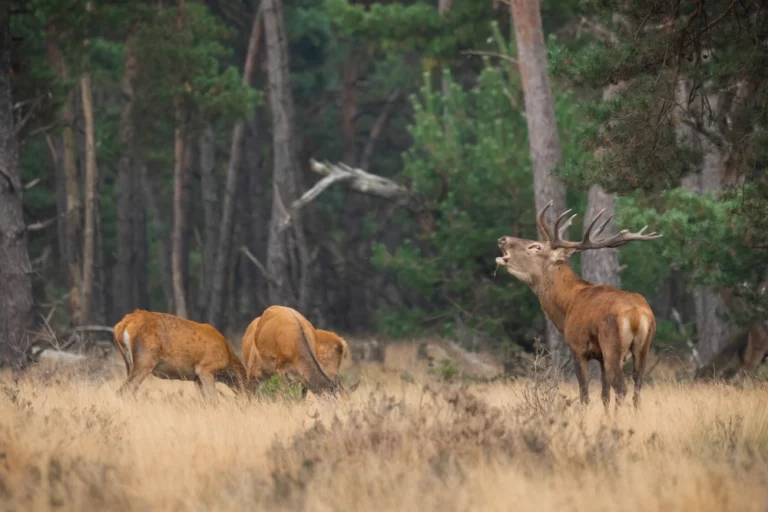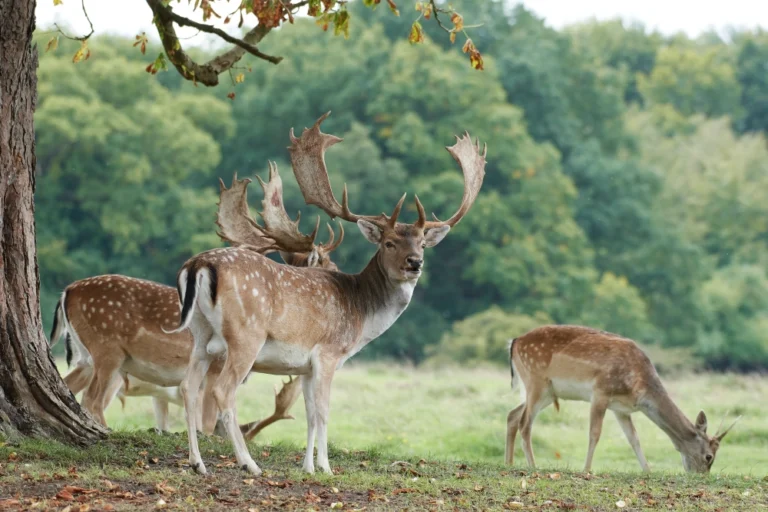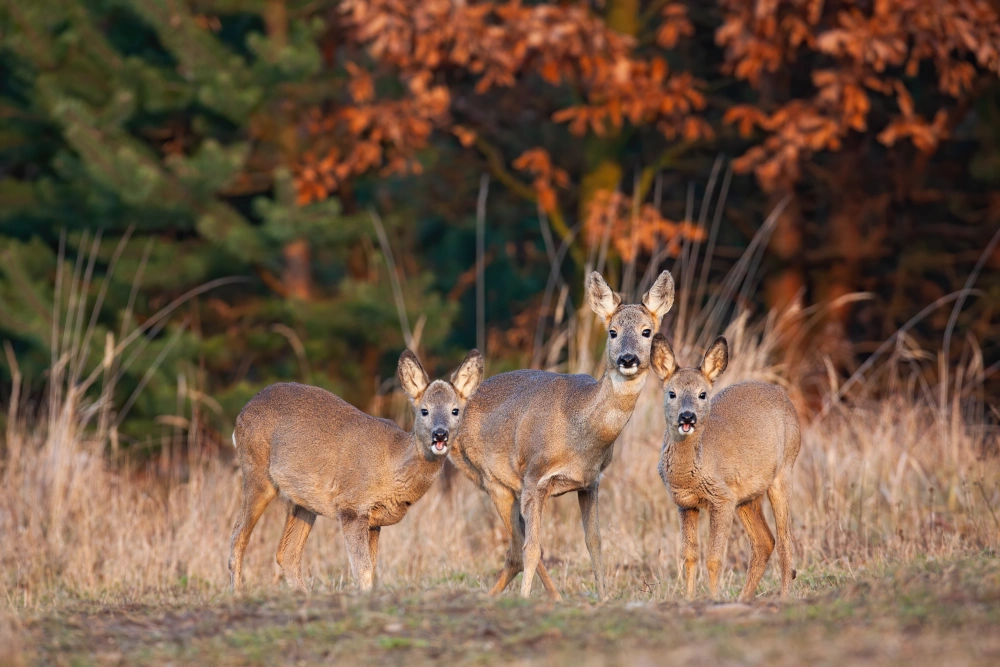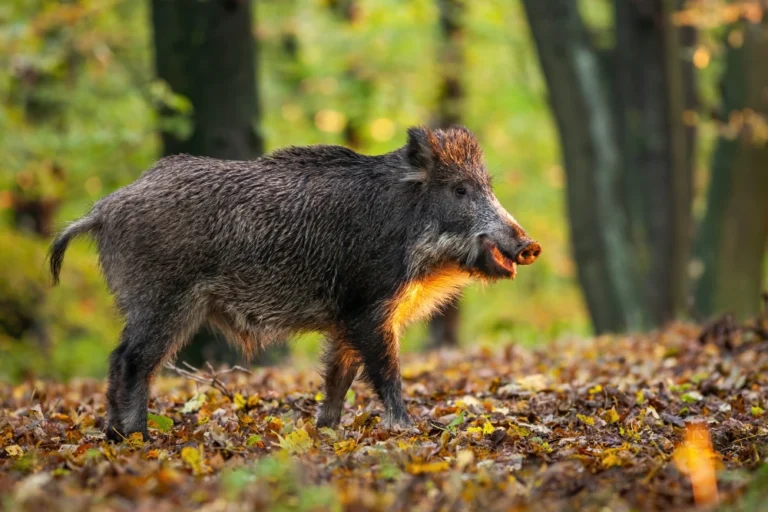Hunting Seasons and Species
Hungary’s Game: Species and Seasons
This section introduces the diverse range of game species available for hunting in Hungary. Below you’ll find detailed descriptions for each species and highlight specific hunting seasons to help hunters prepare accordingly. Whether you’re interested in the majestic red deer or the elusive roe deer, you’ll find all the information you need to plan your perfect hunting adventure.

Red Deer / Red Stag
Amazingly, the red deer ranks as one of Hungary's largest game animals. Hunters highly seek this majestic species due to its impressive size. Males, called stags, often grow large antlers that can span up to 1.5 meters in width and weigh up to 14 kg. In winter, the red deer’s reddish-brown coat darkens, creating a contrast with its lighter undersides. Their hunting season spans from early September to the end of January.

Fallow Deer
Fallow deer (Dama dama) are the second largest deer species native to Hungary and Europe. Moreover, the fallow deer's distinct antlers make it a unique hunting experience, particularly appreciated for its beauty. Fallow deer display a variety of coat colors, such as brown, white, and black, along with spotted patterns on their backs. Hunters can pursue this game from 15th September to 28th February.

Roe Deer
These deer are known for their reddish-brown fur coat, white rump patch, and short antlers, which are typically only present on males (bucks).Roe deer are primarily solitary animals,However, small groups may form during the winter months. For roe deer bucks, the hunting season extends from 15th April to 30th September, while for does and fawns, it lasts from 1st October to 28th February.

Mouflon
The mouflon (Ovis orientalis) is a wild sheep species native to mountainous regions of Hungary and Europe. Mouflon have distinctive appearance, with males (rams) typically having large, curved horns that can reach impressive lengths. Females (ewes) also have horns, but they are smaller and less curved than those of males. The hunting season for this game extends throughout the entire year.

Wild Boar
Wild boars, commonly known as wild pigs or feral pigs, are large omnivorous mammals. In Hungary and across Eurasia, they are highly valued for their distinctive characteristics. Additionally, wild boars stand out due to their robust bodies, bristly fur, and tusks that protrude from their mouths, enhancing the thrill of the hunt. For hunting wild boars, methods such as stalking, stand hunting, and driven hunts are available, ensuring a variety of thrilling experiences. In Hungary, hunters favor driven hunts, where beaters direct boars toward them. Hunters can pursue this game year-round, with open season access throughout the year.

Hare
The brown hare (Lepus europaeus) is a species of hare native to Hungary and Europe. The brown hare has distinctive long ears, powerful hind legs, and fast running speed. Brown hare hunting is a popular hunting activity in Hungary, typically takes place during the hare hunting season, which usually occurs in the fall and winter months. You can choose from various hunting methods, such as stalking, stand hunting, and driven hunts, to match their preferences. For hares, the season runs from 1st October to 31st December.

Pheasant
Pheasant hunting in Hungary is a popular and traditional hunting activity that attracts hunters from around the world. The season typically varies depending on the region and local regulations. Choose from various hunting methods, including driven hunts, walk-up hunts, or hunting with dogs, to find the approach that best suits your style. In Hungary, driven hunts are commonly used for pheasants, where beaters direct the birds toward them, creating an exciting hunting experience. Pheasants can be hunted from 1st October to 28th February.

Mallard
Mallards are a common species of duck found in Hungary, and hunting them provides an exciting and challenging experience for hunters. Typically, Hunters pursue mallards during the peak waterfowl season in fall and winter when populations are abundant. Hunters can choose from a variety of hunting methods, from decoy hunting and pass shooting to blinds and boat hunts. The season for mallards runs from 15th August to 31st January.
Hunting Methods
Select from a range of hunting methods tailored to your preferences and the game you wish to hunt. If stalking through the forest appeals to you, or if you seek the thrill of a driven hunt, we offer the expertise and equipment to make your outing a success.
Stalking
Hunters use stalking as a traditional and challenging method that involves quietly and carefully approaching game on foot. The technique requires patience, skill, and a deep understanding of the animal’s behavior. Stalking allows hunters to experience the wilderness up close and offers a rewarding sense of achievement when successfully closing the distance on a target.
Driven Hunts
Driven hunts offer an exhilarating group hunting experience, where beaters direct game toward a line of hunters. This method is highly effective for species like wild boar and deer. In Hungary, this style of hunting enjoys great popularity, blending excitement with the tradition of hunting camaraderie.
Stand Hunting
Stand hunting involves waiting in a fixed position, often from a high vantage point like a tree stand or hunting blind, for game to come within range. This method is ideal for observing wildlife in its natural habitat. The approach offers a quiet and patient experience, allowing for precise and ethical shots.
